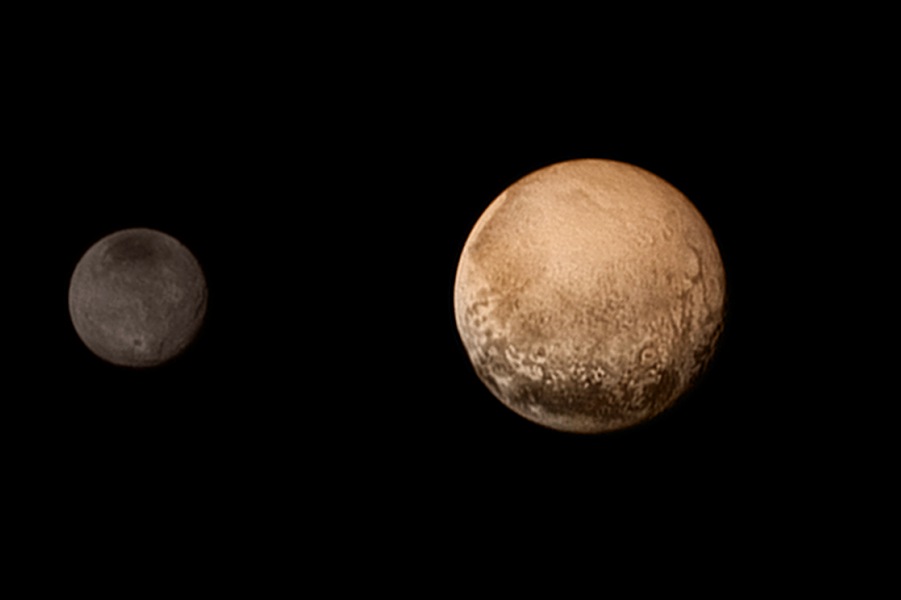Wed 02 October 2024:
Scientists have detected carbon dioxide and hydrogen peroxide on Charon, Pluto’s largest moon, revealing new details about its chemical composition and shedding light on the evolution of solar system objects far beyond Neptune. These findings, captured by the James Webb Space Telescope, build upon earlier data collected during NASA’s New Horizons mission.
Sub-headline 2: Charon’s Icy Surface Reveals Unexpected Complexity
Charon, previously known primarily for its icy surface of crystalline water and ammonia, has now been found to possess a more intricate chemical composition than once thought. Published in Nature Communications, the study highlights the moon’s evolving nature. “These insights into the chemical diversity and evolutionary processes on Charon are crucial,” noted the research team.
__________________________________________________________________________

https://whatsapp.com/channel/0029VaAtNxX8fewmiFmN7N22
__________________________________________________________________________
Sub-headline 3: Trans-Neptunian Objects Hold Key to Solar System’s Past
Lead researcher Silvia Protopapa explained the importance of studying Trans-Neptunian Objects (TNOs), which orbit the Sun beyond Neptune. “These objects serve as time capsules, offering scientists a glimpse into the early solar system,” Protopapa told CBS News. Charon, half the size of Pluto, is part of a rare double dwarf planet system, making it an especially intriguing subject for exploration.
Sub-headline 4: New Insights Offer Broader Understanding of Kuiper Belt Objects
The use of Webb’s near-infrared spectrograph has provided a clearer picture of Charon’s surface, surpassing the capabilities of previous missions. Protopapa highlighted that more research is needed to distinguish between compounds that remain unchanged and those altered by solar radiation.
“Understanding this distinction is crucial for piecing together the nature of the primordial disk from which these objects formed 4.5 billion years ago,” she emphasized. These findings could also deepen our understanding of other icy bodies in the Kuiper Belt and early solar system formation.
SOURCE: INDEPENDENT PRESS AND NEWS AGENCIES
______________________________________________________________
FOLLOW INDEPENDENT PRESS:
WhatsApp CHANNEL
https://whatsapp.com/channel/0029VaAtNxX8fewmiFmN7N22
![]()
TWITTER (CLICK HERE)
https://twitter.com/IpIndependent
FACEBOOK (CLICK HERE)
https://web.facebook.com/ipindependent
YOUTUBE (CLICK HERE)
https://www.youtube.com/@ipindependent
Think your friends would be interested? Share this story!





